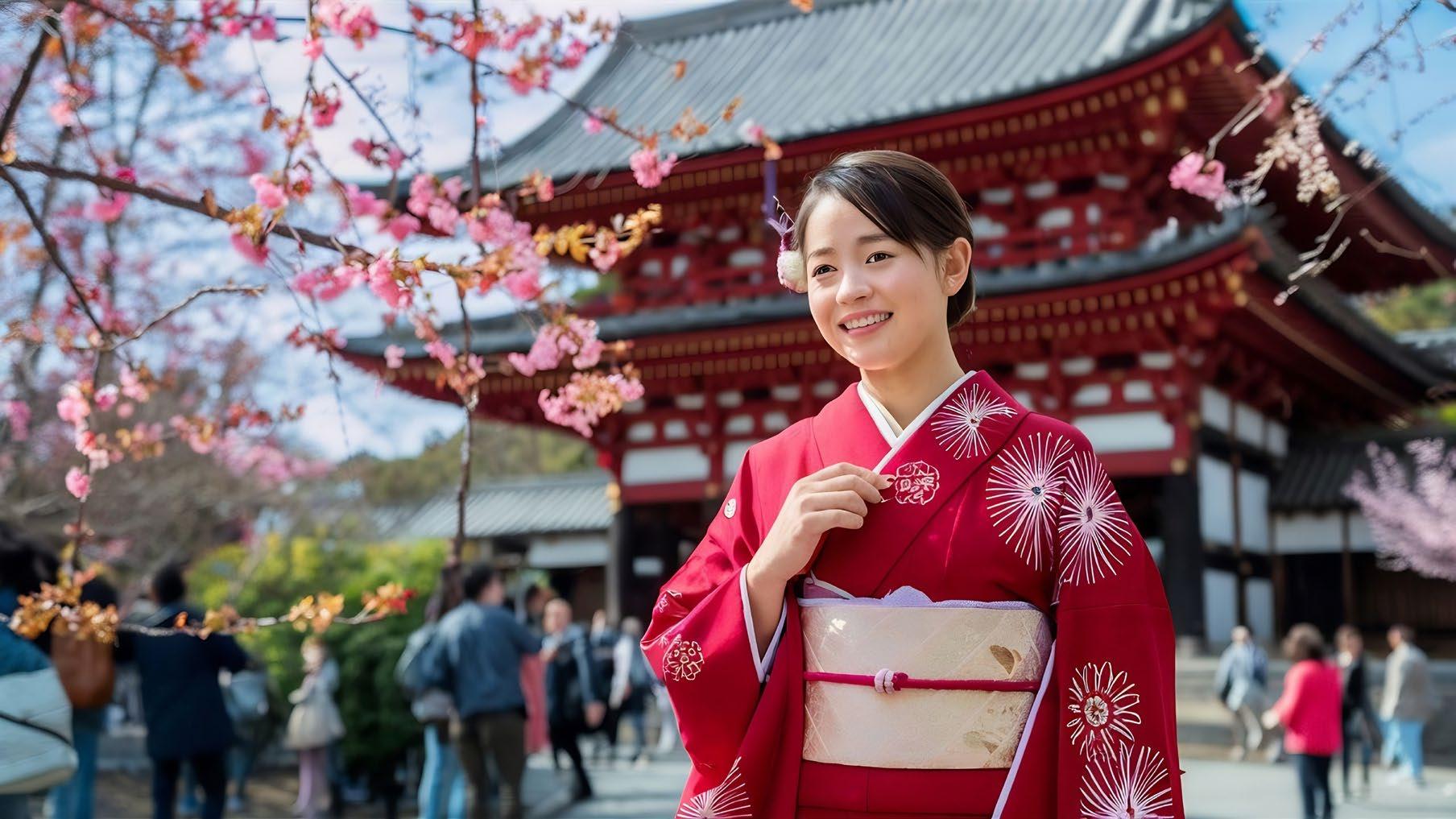
Issue 15




the founder of Advva Revolutionizing the Road: How Advva is Changing the Face of Outdoor Advertising
Roberto Cavalli: Remembering a Titan of Fashion Innovation
Cybertruck: Tesla’s Bold Vision for the Future of Pickup Trucks
The Fasting Diet: Exploring the Health Benefits and Challenges
Founder and Editor: Dr. Iman Razavi
Visual Design Editor: Sepideh Serri
Design Team: Mahsa Jafari
AI Pictures: Sepideh Serri. Mahsa Jafari
Video Production: Amir Saraeimoghadam Identity
Tel:
Netflix: Revolutionizing Home Entertainment and the Film Industry
Roberto Cavalli: Remembering a Titan of Fashion
The Transformative Power of Dental Implants: Boosting Confidence and Restoring Smiles
Faramarz Aslani: A Legacy of Musical Poetry
Robbins: A Titan of Motivation and Personal Development
“Money: Master the Game” by Tony Robbins –Unpacking the Secrets to Financial Freedom
Feng Shui: The Ancient Art of Creating Harmonious Spaces
Crafting the Customer Persona: The Key to Targeted


www.facebook.com/persianprestige

As we navigate through the evolving landscapes of culture, technology, and health, the recent articles featured in our publication offer more than just information—they provide a window into the significant transformations shaping our world. From the advances in telemedicine and smart home technologies to the enduring impact of artists like Faramarz Aslani, our coverage aims to enrich understanding and inspire reflection among our readers. As we delve into these diverse topics, several key themes emerge, highlighting the interconnectedness of our modern lives.


Our exploration of smart home trends in 2024 reveals a future where our living spaces are not only more connected but also more intuitive and energy-efficient. These advancements promise to enhance our daily lives, making our homes safer, more comfortable, and more attuned to our needs. Similarly, the expansion of telemedicine demonstrates technology’s pivotal role in transforming healthcare delivery, making medical services more accessible and efficient. These developments remind us of technology’s potential to drive significant improvements in our quality of life and health.
The passing of Faramarz Aslani, a revered figure in the Iranian music scene, reminds us of the profound impact that artists can have on cultural identity and expression. Aslani’s work transcended geographical and cultural boundaries, enriching the lives of listeners around the world with his poetic lyrics and unique melodies. His legacy invites us to reflect on how art continues to serve as a vital form of communication, connection, and understanding across diverse communities.


Our discussion on the importance of drinking water, while a fundamental topic, underscores the broader theme of wellness in everyday life. It serves as a reminder of the simple, yet crucial, actions we can take to improve our health and well-being. This focus on fundamental health practices connects with the broader implications of lifestyle choices on our long-term health, a theme that resonates deeply in our fast-paced, modern world.
As we look to the future, it is clear that our journey through change is ongoing. Whether it’s adapting to new technologies, embracing cultural shifts, or prioritizing our health, each step forward offers new opportunities and challenges. As a community, we have the potential to harness these changes for a better future, guided by knowledge, creativity, and innovation.
In conclusion, the diversity of topics covered in recent articles not only reflects the breadth of human endeavor but also the depth of human potential. As we continue to cover these developments, our goal remains to provide insights that inform, challenge, and inspire. Let us move forward with open minds and hearts, ready to embrace the transformations that lie ahead.
Dr. Iman Razavi persianprestigemagazine.com



1. What inspired the initial idea behind Advva?
“Advva was born out of a deep desire to create a platform that empowers individuals and businesses to thrive in the digital age. The initial spark came from observing the challenges many faced in navigating the complex world of digital marketing and online presence. I saw countless small businesses and entrepreneurs with great potential struggle to gain visibility and reach their audience effectively. This inspired me to develop a solution that simplifies the digital landscape, providing intuitive tools and resources to help them succeed. Advva is all about leveling the playing field and allowing everyone to harness the power of digital innovation.
2. How did you validate the market need for Advva before fully committing to the business model?
Validating the market need for Advva was a crucial step before fully committing to our business model. We started with extensive market research, including surveys, interviews, and focus groups with small business owners and entrepreneurs. We wanted to understand their pain points, challenges, and what solutions they were currently using.
We also analyzed industry trends and www.advva.com www.instagram.com/advvainc
competitive landscapes to see where the gaps and opportunities were. Early on, we created a minimum viable product (MVP) and tested it with a select group of users to gather feedback and iterate based on their experiences. The overwhelmingly positive response and the clear demand for a userfriendly, comprehensive digital platform solidified our belief in the need for Advva.
Additionally, we looked at data and insights from similar industries and identified key metrics that indicated a growing need for digital marketing tools and resources. This thorough validation process gave us the confidence to move forward, knowing we were addressing a genuine market need.
3. Can you describe the challenges you faced in the early stages of developing Advva’s business idea and how you overcame them?
The early stages of developing Advva were filled with challenges, as with any startup. One of the biggest hurdles was assembling the right team. We needed individuals who not only had the technical skills but also shared the vision and passion for empowering businesses. Finding and retaining such talent was crucial, and we focused on building a company culture that encouraged innovation, collaboration, and a shared sense of purpose.
Additionally, developing a user-friendly platform that could cater to a diverse audience posed its own set of challenges. We


tackled this by prioritizing user experience and continuously gathering feedback from our beta testers. This iterative process allowed us to refine our features and ensure we were meeting the needs of our users. Lastly, marketing and gaining traction in a crowded digital space was a significant challenge. We employed a strategic approach, leveraging content marketing, social media, and partnerships to build our brand presence and attract our target audience.
Through persistence, adaptability, and a clear focus on our vision, we were able to navigate these early challenges and lay a strong foundation for Advva.
4. How did you build your team for Advva, and what qualities were you looking for in team members during the early stages?
Building the right team for Advva was a critical factor in our early success. In the initial stages, we focused on finding individuals who not only had the necessary skills but also shared our vision and passion for empowering businesses through digital innovation. Here’s how we approached it:
1. Vision Alignment:
We looked for people who resonated with Advva’s mission and could see the potential impact of our platform. We wanted team members who were genuinely excited about our goals and committed to helping small businesses thrive.
2. Technical Expertise:
For our technical team, we prioritized hiring developers and engineers with strong backgrounds in web development, UX/ UI design, and digital marketing tools. We needed people who could build a robust and user-friendly platform.
3. Adaptability and Problem-Solving Skills: Startups are dynamic environments, and we needed team members who were adaptable and could think on their feet. We valued those who could identify problems quickly and come up with effective solutions.
4. Collaboration and Communication:
Building a cohesive team required excellent communication skills and a collaborative mindset. We sought individuals who could work well with others, share ideas freely, and contribute to a positive and productive work environment.
5. Innovative Thinking:
We wanted creative thinkers who weren’t afraid to challenge the status quo and bring fresh ideas to the table. Innovation is at the heart of Advva, and having a team that could push boundaries was essential.
6.Experience and Drive:
While experience was important, we also valued drive and ambition. We hired individuals who were eager to learn, grow, and take on new challenges. Their energy and enthusiasm were key to driving our early progress. We built our team through a combination of networking, referrals, and targeted recruitment

efforts. By focusing on these qualities, we assembled a group of talented and dedicated professionals who have been instrumental in Advva’s development and success.
5. How does Advva’s car wrapping and mobile advertising service benefit businesses and enhance their marketing efforts?
Advva is revolutionizing outdoor advertising by wrapping cars with advertisements, transforming everyday vehicles into mobile billboards. Here’s how Advva can help businesses:
Increased Visibility: Advva’s wrapped cars drive around cities, reaching a wide and diverse audience. This mobile advertising strategy ensures that your brand is seen by thousands of people every day, increasing visibility and brand awareness.
Targeted Marketing: With Advva, businesses can choose specific areas or routes for their advertising campaigns. This allows for targeted marketing, ensuring your ads are seen by the right audience in the right locations, maximizing the impact of your campaign.
Cost-Effective Advertising: Traditional advertising methods can be expensive and often have limited reach. Advva offers a cost-effective alternative that combines the benefits of outdoor advertising with the mobility of vehicle wraps, providing more bang for your buck.
Engaging and Memorable: Mobile ads are hard to ignore. As wrapped cars move through traffic and city streets, they capture attention and leave a lasting impression. This high engagement level helps reinforce your brand message and make it memorable to potential customers.
Flexible Campaigns: Advva offers flexible advertising options, allowing businesses to run short-term or long-term campaigns based on their needs and budget. Whether it’s a month-long promotion or a yearlong brand-building effort, Advva can accommodate your requirements.
Real-Time Analytics: Advva provides realtime tracking and analytics, giving businesses insights into the performance of their campaigns. You can monitor the routes taken, impressions made, and the overall effectiveness of your advertising efforts, enabling you to make data-driven decisions.
Eco-Friendly Options: Advva is committed to sustainability. We use eco-friendly materials for our wraps and offer options for electric and hybrid vehicles, allowing businesses to promote their brand while minimizing their environmental footprint.

By leveraging Advva’s innovative car wrapping and advertising services, businesses can effectively reach their target audience, increase brand visibility, and drive growth in a cost-efficient and impactful way.




In today’s fast-paced world, catching the eye of the consumer is more challenging than ever. Traditional billboards have dominated highways and cityscapes for decades, but in the era of digital saturation, their impact has begun to wane. This is where Advva comes in, transforming mobile billboard technology and redefining what outdoor advertising can achieve.
Advva wasn’t born out of a mere desire to innovate; it was born out of necessity. As digital advertising became increasingly prevalent, it also became increasingly ignorable. Ads lost among countless others online, messages skipped, and budgets wasted—the digital realm was crowded and chaotic. That’s when I saw a clear gap in the market for something tangible and unavoidably eye-catching: mobile billboards.
Unlike static billboards, Advva’s mobile billboards are dynamic, moving through urban and suburban landscapes, engaging viewers from multiple vantage points. Our patented technology ensures that your brand not only reaches but captivates a diverse audience, turning everyday commutes into potential customer conversions.





At Advva, we don’t just promise exposure; we guarantee it. Our mobile billboards traverse the most frequented routes, ensuring thousands of impressions daily. But it’s not just about quantity— it’s about quality. Our strategic route planning is designed to maximize visibility specifically to your target demographic, enhancing both reach and relevance.
Here’s what makes Advva different:
• Strategic Mobility:
Our ads go where your customers go. This isn’t random; it’s calculated for maximum engagement.
• Unskippable Format:
In a world where ad blockers and skip buttons diminish digital ad effectiveness, our mobile billboards can’t be ignored.
• Landmark Advertising:
Over time, our mobile billboards become familiar sights, akin to moving landmarks that are anticipated and recognized.
Transparency is at the heart of what we do. With Advva, every client gains access to comprehensive reporting that tracks each ad’s performance in real-time. This isn’t just about showing numbers; it’s about showing progress and proving ROI from the first day of the campaign.



As we look to the future, Advva is committed to expanding its technological frontiers and exploring new ways to make outdoor advertising even more interactive and engaging. We envision a future where our mobile billboards not only display ads but also interact with viewers through augmented reality, further bridging the gap between advertisement and audience.
If you’re ready to break free from traditional advertising constraints and propel your brand into new heights of visibility and engagement, it’s time to consider Advva. Let us help you turn every street into a potential hotspot for your advertising success. Contact us today, and together, let’s drive your brand forward.
Advva is not just another advertising company; we are the vanguard of the next advertising revolution. Join us, and let’s make your brand unmissable.
www.advva.com www.instagram.com/advvainc

persianprestigemagazine.com
Each year, as spring transitions into summer, the historic city of Kashan in Iran bursts into colors and scents, celebrating the ancient and enchanting Rosewater Festival. This festival, locally known as “Golabgiri”, marks a season of harvesting the Damask rose (Rosa damascena) and extracting its fragrant water. It is not just a cultural event but a spiritual journey that blends tradition, economy, and the arts into a captivating experience.





Kashan, located in the Isfahan province of Iran, is a city steeped in history and architecture. Known for its beautiful gardens, intricate tiled mosques, and grand bazaars, the city also lies in a region favorable for growing the highly fragrant Damask rose. The festival primarily takes place in Qamsar, a small town nearby, which along with a few other towns contributes significantly to the production of rosewater in the country.
The Rosewater Festival usually begins in late May and can last anywhere
from two to three weeks. The timing depends on the climate each year, which affects the blooming of roses. The process of making rosewater has been passed down through generations, largely remaining unchanged. It involves picking roses at dawn, which is believed to be the time when the roses are most fragrant. These blooms are then placed in large copper pots. Water is added, and the pots are sealed and connected to a series of bamboo tubes that condense the steam produced by boiling the petals. This distilled liquid is rosewater, prized for its aroma and various uses.



For the people of Kashan and the surrounding areas, rosewater is more than just a fragrant liquid; it is a source of pride and economic stability. It is used not only in Persian cuisine and tea but also in religious ceremonies and the global perfume industry. The festival attracts thousands of tourists, both domestic and international, boosting local commerce and allowing artisans and vendors to display and sell traditional crafts, foods, and more.

Visitors to the Kashan Rosewater Festival can expect a sensory overload. The air is thick with the sweet scent of roses, and the sights of traditional music and dance performances add to the festive atmosphere. Tourists can participate in the rose-picking and distillation process, offering a hands-on experience that connects them directly to this ancient practice.
Moreover, the festival is an excellent opportunity for cultural exchange. Tourists learn about traditional Persian music, local handicrafts like carpet weaving, and the architectural marvels of Kashan. They can visit the famous historical houses of Kashan, such as the Tabatabaei House and Borujerdi House, which are examples of 19th-century Persian architecture and design.

The Kashan Rosewater Festival is a testament to the cultural richness of Iran, showcasing the beauty of its traditions and the warmth of its people. It offers a unique glimpse into the delicate balance of beauty, tradition, and community spirit found in this part of the world. Whether you’re drawn by the lure of traditional crafts, the love of nature, or culinary adventures, the festival provides a window into the soul of Persian culture, making it a must-visit event for those seeking to enrich their understanding of this ancient land.


Cyrus the Great, a name that resonates through history as the founder of the Persian Empire, remains one of the most illustrious figures in the annals of the ancient world. His reign, beginning in 559 BC and lasting until his death in 530 BC, marked the start of a new era in the Near East. Under his leadership, the Persian Empire expanded to become one of the largest the world had ever seen, stretching from the Indus Valley in the east to the shores of the Aegean Sea in the west.



Cyrus was born around 600 BC to Cambyses I, king of Anshan, and his wife Mandane, who was a daughter of the Median king Astyages. This lineage positioned him uniquely at the intersection of Median and Persian nobility, enabling him to claim a significant heritage and authority. His rise to power began with the unification of the Persian tribes and the subsequent overthrow of his grandfather, Astyages, king of the Medes. This pivotal victory in 550 BC not only marked the end of Median supremacy but also the beginning of the Achaemenid Empire, with Cyrus at its helm.

Cyrus the Great is perhaps best known for his military genius, which was evident in his strategic and often benevolent approach towards conquest. He expanded Persian territories dramatically, conquering Lydia in Asia Minor and Babylon in Mesopotamia. His most notable conquest was that of Babylon in 539 BC, which he achieved with minimal destruction through astute military tactics and psychological warfare.
Cyrus’s governance was revolutionary for its time. He is credited with pioneering the concept of the empire, not merely through conquest but through the integration and respectful treatment of its diverse peoples. His approach to governance was characterized by tolerance and respect for local customs and religions. This is exemplified in his treatment of the Jews during the conquest of Babylon, where he allowed them to return to Jerusalem and rebuild their temple, a policy recorded in the Cyrus Cylinder and the Bible.



The Cyrus Cylinder, discovered in the ruins of Babylon, is often regarded as one of the first declarations of human rights. It outlines Cyrus’s reforms and his edicts on religious tolerance and repatriation of displaced peoples. This artifact has immortalized Cyrus as a liberator rather than a conqueror, highlighting his contribution to the development of governance that values the rights and identities of its subjects.


Cyrus the Great met his demise in 530 BC, during a campaign in the northeast, possibly against the Massagetae along the Syr Darya (Jaxartes) River. He was succeeded by his son, Cambyses II, who continued
to expand the Persian Empire. Cyrus’s legacy, however, is most evident in his innovative approach to empire-building, which emphasized the benefits of mercy and effective administration over brute force.




Cyrus the Great’s vision for the Persian Empire set the foundation for what would become one of history’s most significant imperial entities. His policies of tolerance and cultural integration were far ahead of their time and left a lasting impact on the administration of vast territories. Today, Cyrus the Great is celebrated not only as a skilled conqueror but also as a wise ruler whose strategies and policies helped shape the course of history, influencing leaders and governments long after his death. His reign epitomizes the possibilities of enlightened leadership and the positive impacts such governance can have on the world.


O.J. Simpson, the former NFL star and central figure in what was dubbed the “Trial of the Century,” passed away yesterday. His death marks the end of a tumultuous public life that was filled with both remarkable achievements and profound controversies.

Orenthal James “O.J.” Simpson rose to fame as an American football player, known for his exceptional talent and charismatic personality. He won the Heisman Trophy in 1968 and enjoyed a successful career in the NFL, primarily with the Buffalo Bills. His transition from sports to the entertainment industry seemed seamless, with Simpson enjoying roles in films and commercials, becoming a beloved figure in American pop culture.
However, Simpson’s life took a dramatic turn on June 12, 1994, when his ex-wife Nicole Brown Simpson and her friend Ronald Goldman were brutally murdered outside Brown’s home in Brentwood, Los Angeles. Simpson quickly became the prime suspect, and what followed was a highly publicized arrest after a dramatic freeway chase broadcast live to millions.
persianprestigemagazine.com




The trial began on January 24, 1995, and became a national obsession, highlighting deep racial tensions and the growing influence of media in the courtroom. Simpson’s “Dream Team” of defense lawyers argued that he was the victim of a racist police force that had mishandled evidence. The prosecution, relying heavily on DNA evidence and the history of Simpson’s domestic abuse, painted him as a jealous ex-husband capable of murder.
A pivotal moment in the trial was the demonstration involving a pair of gloves used in the murders, which Simpson struggled to fit on his hands in a courtroom demonstration. This led to Johnnie Cochran’s memorable defense line: “If it doesn’t fit, you must acquit.” The jury acquitted Simpson on October 3, 1995, in a verdict that polarized the nation.


Though Simpson was acquitted of the murder charges, his legal battles continued. In 1997, he was found liable for the wrongful deaths of Nicole Brown Simpson and Ronald Goldman in a civil trial, resulting in a $33.5 million judgment against him. Simpson’s life post-trial was marked by further legal issues, including his 2008 conviction for armed robbery and kidnapping in Las Vegas, for which he served nine years in prison before being released in 2017.

O.J. Simpson’s death brings an opportunity to reflect on his complex legacy. To some, he was a groundbreaking athlete and charismatic personality whose potential was overshadowed by his legal and personal troubles. To others, he remains a figure emblematic of America’s struggles with celebrity culture, racial injustice, and the inefficiencies of the legal system. As we remember Simpson, we are reminded of the myriad ways in which his life story intersects with broader societal issues, leaving behind a legacy that continues to provoke thought and debate. His death marks not just the end of a life but also the closure of a chapter in American cultural history, one that will be analyzed and debated for years to come.




Jalal ad-Din Muhammad Rumi, more commonly known simply as Rumi, was a 13th-century Persian poet, theologian, and Sufi mystic whose profound and eloquent works have transcended time, geography, and culture. Born on September 30, 1207, in the region now present-day Afghanistan, Rumi lived most of his life in the Seljuk Empire’s town of Konya, now part of modern-day Turkey. His literary legacy and philosophical teachings have secured him a place as one of the most celebrated and revered poets in the world.

Rumi’s life began in a period of intense social and political turbulence. His family left their native homeland due to the Mongol invasions, traveling extensively in the Muslim lands before finally settling in Konya. His father, Baha’uddin Walad, was a noted theologian and mystic, and Rumi inherited his position as a religious scholar at a young age. This profound foundation in religious studies and mysticism deeply influenced Rumi’s writings and teachings.

The pivotal moment in Rumi’s life came in 1244 when he met Shams-e Tabrizi, a wandering dervish whose unconventional ways deeply affected him. The intense and mystical friendship between Shams and Rumi transformed the latter, deepening his spiritual practice and inspiring some of his most passionate and profound poetry. However, Shams disappeared mysteriously, a loss that deeply grieved Rumi and influenced much of his later work. This period marked the beginning of Rumi’s transformation from a respected scholar to an impassioned poet and mystic.

Rumi’s literary output is both vast and impressive, consisting of several major works. His most famous work, “Masnaviye Ma’navi” (Spiritual Couplets), is a sixvolume epic considered the Persianlanguage Quran. It illustrates the Sufi path to enlightenment through stories and homilies. Another notable work, “Diwan-e Shams-e Tabrizi” or “The Collected Poems of Shams,” is a collection of over 40,000 verses inspired by his mystical relationship with Shams and is filled with themes of divine love and the destruction of the ego.
Rumi’s work transcends the mere expression of philosophical insights, exploring themes of the universal quest for love, the pain of loss, the beauty of life, and the intricacy of human emotion. He believed passionately in the use of music, poetry, and dance as a path for reaching God. Rumi’s philosophy was deeply permeated with the notion of ‘Tawhid’ - the unity of all beings in God and the interconnectivity of all aspects of creation.


Today, Rumi’s impact goes beyond spiritual and literary realms, resonating with people of all faiths and backgrounds. His thoughts on love, humanity, and spirituality continue to be relevant, making him one of the most widely read poets in the world. His works have been translated into numerous languages, and his teachings on tolerance and transcendence continue to inspire discussions and works in theology, psychology, and the arts.

Rumi’s legacy as a bridge between diverse cultures and epochs speaks of his universal appeal and timeless relevance. His work does not merely invite us to explore the depths of mysticism but also encourages us to discover the essence of our being and the universe. As the world continues to navigate through times of division and strife, Rumi’s poetry and philosophy offer a beacon of hope and unity, proving that his teachings are just as pertinent today as they were in the 13th century.


Fasting diets, also known as intermittent fasting (IF), have gained considerable popularity in recent years as a method for losing weight, improving metabolic health, and even extending lifespan. This dietary approach alternates between periods of eating and fasting, ranging from several hours to a couple of days each week. Despite its rising popularity, it’s essential to understand both the potential benefits and the risks associated with this kind of dietary regimen.


Intermittent fasting involves scheduling periods of voluntary abstinence from food and drink. Several approaches are popular today, including the 16/8 method, which restricts daily eating to an 8-hour window; the 5:2 method, where calories are significantly reduced on two non-consecutive days per week; and the Eat-Stop-Eat method, which involves a 24-hour fast once or twice a week. These methods aim to create calorie deficits through reduced meal frequency rather than limiting specific foods or food groups.

1. Weight Loss and Metabolic Health: One of the most significant benefits of intermittent fasting is weight loss, as it typically leads to a natural reduction in calorie intake. Additionally, fasting periods shift the metabolism from relying on glucose for energy to a greater reliance on fat, a process known as metabolic switching. This can improve insulin sensitivity and lead to reductions in blood sugar levels, which are beneficial for managing or preventing type 2 diabetes.
2. Heart Health: Some research suggests that intermittent fasting can improve various risk factors for heart disease, including lowering blood pressure, cholesterol levels, and inflammatory markers.
3. Brain Health: There are also implications for neurological health, as fasting can increase the production of brain-derived neurotrophic factor (BDNF), a protein that contributes to the life of brain cells. It may also enhance the brain’s resistance to stress and injury.
4. Longevity: Animal studies have shown that intermittent fasting can extend lifespan, although more research is needed to confirm similar effects in humans.


While the benefits can be significant, intermittent fasting is not suitable for everyone. Key considerations include:
• Medical Conditions: Individuals with diabetes, low blood pressure, or a history of eating disorders should consult with a healthcare provider before starting a fasting diet. Women who are pregnant or breastfeeding should also avoid fasting.
• Potential Side Effects: Intermittent fasting can lead to headaches, dizziness, constipation, and dehydration, especially when one is not adequately hydrated or replenishing electrolytes during non-fasting periods.
• Nutrient Intake: There is a risk of nutrient deficiencies if the eating periods do not include balanced, nutrient-rich foods.
• Lifestyle and Sustainability: The sustainability of intermittent fasting can vary widely among individuals. Some may find the diet easy to follow, while others may struggle with hunger pangs, irritability, or fatigue during fasting periods.



persianprestigemagazine.com
Intermittent fasting presents a promising, flexible approach to eating that can lead to various health benefits. However, like any diet, it is essential to consider personal health circumstances and lifestyle factors. Consulting with healthcare providers can ensure that the diet is conducted safely and effectively, tailoring the approach to individual nutritional needs and health conditions. As research evolves, it continues to shed light on the best practices for implementing fasting diets to maximize health benefits while minimizing risks.




In our fast-paced world, finding effective ways to relax is more crucial than ever. Among the many relaxation techniques available, listening to music stands out as not only accessible but also profoundly impactful. Numerous studies have confirmed that music can play a significant role in reducing stress and improving overall emotional and physical health. This article explores the importance of listening to music as a relaxation tool, examining its psychological benefits and practical applications in everyday life.



1. Stress Reduction:
Music has a direct effect on the autonomic nervous system, which helps the body relax and prepare for sleep. Slow, soothing music can decrease cortisol levels, the hormone associated with stress. Listening to music triggers the release of neurotransmitters like dopamine, a ‘feelgood’ hormone that helps reduce feelings of anxiety and depression.
2. Enhanced Mood:
Music can elevate one’s mood, providing an emotional boost through its rhythmic and
melodic properties. It acts as a supportive tool for emotional expression and processing, helping individuals cope with feelings of loneliness or sadness.
3. Improved Sleep:
Many people find that listening to calm, soft music before bedtime promotes quicker and more restful sleep. Studies suggest that music with a slow tempo, ideally around 60 beats per minute, can help initiate the sleep process by calming the mind and relaxing the muscles.


Listening to relaxing music has been shown to effectively reduce heart rate and blood pressure in various clinical settings, making it a useful tool for managing hypertension.
Music therapy is widely used in hospitals to enhance post-operative recovery, reduce pain, and decrease the overall use of painkillers. By shifting focus away from painful stimuli and promoting relaxation, music can provide significant relief.
There is emerging evidence that the emotional and physical effects of music can also enhance the immune response, which helps protect against a range of illnesses.





• Daily Stress Management:
Incorporating music into daily routines can help manage stress. Whether it’s during a commute, on a lunch break, or part of a morning ritual, listening to music can provide a much-needed relief from daily pressures.
• Therapeutic Use:
In therapeutic settings, music therapists use guided music sessions to help patients address physical, emotional, psychological, and social needs, aiding their recovery process.
• Workplace
Employers are increasingly recognizing the benefits of music in the workplace to boost morale and productivity. Soft background music can help reduce anxiety and improve focus among employees.


The effectiveness of music in promoting relaxation depends largely on personal preference. What is soothing for one person might be irritating to another. It’s important to explore different genres and styles to find what truly helps you relax and feel at peace. Generally, classical music, jazz, soft rock, and certain types of world music have been found to be particularly effective for stress reduction.



The power of music to induce relaxation is a testament to its profound impact on the human mind and body. As a versatile, affordable, and enjoyable tool, music provides an accessible means to enhance quality of life by promoting relaxation, reducing stress, and supporting overall health. Embracing the soothing power of music can be a delightful and therapeutic part of anyone’s wellness routine, helping to bring balance in times of chaos and calm in the midst of stress.



Cancun, situated on the northeastern coast of the Yucatan Peninsula in Mexico, is a world-renowned tourist destination that attracts millions of visitors each year. Known for its stunning white-sand beaches, vibrant nightlife, and rich cultural history, Cancun offers a perfect blend of natural beauty and modern amenities. Whether you’re a history buff, an adventure seeker, or simply looking to relax by the sea, Cancun has something for everyone. Here’s a guide to some of the top tourist attractions in this tropical paradise.
Cancun’s beaches are perhaps its biggest draw. The city boasts some of the most beautiful beaches in the world with crystal-clear turquoise waters and powdery, white sands. Popular beaches like Playa Delfines offer not only spectacular views but also amenities such as beach umbrellas and loungers. For those seeking a more tranquil experience, Playa Tortugas provides a quieter atmosphere and is great for families.


No visit to Cancun is complete without exploring the ancient Mayan ruins scattered across and near the city. The most famous of these is Chichen Itza, a large pre-Columbian city that is a UNESCO World Heritage Site and one of the New Seven Wonders of the World. Closer to Cancun, El Rey Ruins offer a fascinating glimpse into Mayan civilization and are conveniently located within the city’s Hotel Zone.




Just a short ferry ride from Cancun, Isla Mujeres is a stunning island known for its laid-back atmosphere, beautiful beaches, and excellent snorkeling and diving opportunities. The island is also home to a sea turtle sanctuary and the MUSA underwater museum, which features over 500 life-sized sculptures submerged underwater.


The Yucatan Peninsula is famous for its cenotes—natural sinkholes or wells that expose groundwater underneath. These geological formations are not only significant in Mayan culture but are also popular swimming and diving spots. Some of the most accessible cenotes from Cancun include Cenote Ik Kil, Cenote Azul, and Gran Cenote, each offering unique swimming experiences in clear, fresh waters surrounded by lush vegetation.


Located in the heart of the Hotel Zone, the Interactive Aquarium Cancun allows visitors to get up close and personal with marine life. Highlights include the opportunity to swim with dolphins, feed sharks, and handle various sea creatures. It’s an educational and fun experience suitable for all ages.



For those who wish to mix a little retail therapy with their beach vacation, La Isla Shopping Village is the perfect destination. This open-air shopping mall is situated on the Nichupte Lagoon and features a wide range of shops, dining options, and entertainment, including a VIP cinema.


Cancun’s nightlife is vibrant and diverse, with something to suit every taste. From bustling nightclubs like Coco Bongo, featuring live performances and extravagant shows, to quieter beachfront bars where you can enjoy a cocktail while listening to the waves, the city’s entertainment options are endless. Additionally, Cancun offers a diverse culinary scene, from local Mexican eateries serving traditional dishes to fine dining restaurants offering international cuisine.

Cancun remains a top destination for tourists from around the globe, thanks to its stunning natural attractions, rich history, and modern comforts. Whether you’re planning a family vacation, a romantic getaway, or a solo adventure, the city’s blend of culture, adventure, and relaxation ensures an unforgettable experience.
persianprestigemagazine.com





 By Tannaz Amirian Tabrizi Baharnaz Jewelry
By Tannaz Amirian Tabrizi Baharnaz Jewelry
From the dawn of human history, jewelry has held an array of cultural, symbolic, and aesthetic significance across different civilizations and eras. More than mere adornments, these objects have served as reflections of artistic expression, societal status, and personal identity. This article explores the profound importance of jewelry throughout human history, underscoring its role as a pivotal element in cultural traditions, social hierarchies, and individual expression.


The use of jewelry can be traced back to prehistoric times when our ancestors would adorn themselves with found objects like shells, bones, and stones. These pieces were not only decorative but also served as amulets believed to provide protection against evil forces or bring good luck. The discovery of how to work metals like gold and silver marked a significant advancement in jewelry making, evident from the treasures found in ancient burial sites and ruins.





In many cultures, jewelry has been imbued with spiritual significance. Ancient Egyptians, for instance, believed in the protective power of jewelry, incorporating symbols like the scarab beetle and the Eye of Horus into their ornate pieces, which they thought could ward off evil and promote good health. In India, jewelry is integral to many religious ceremonies and rites of passage, with specific pieces like the ‘mangalsutra’ necklace symbolizing marriage and the ‘payal’ ankle bracelets believed to invoke divine blessings.




Throughout history, jewelry has also been a marker of social status and wealth. In ancient societies from Egypt to China and Europe, the amount and intricacy of jewelry one wore was directly tied to their rank and affluence within the social hierarchy. Kings, queens, and nobility would often be interred with their jewelry, as these items were considered essential for their status in the afterlife. The crown jewels of monarchies around the world continue to represent the power and dignity of their bearers.



The evolution of jewelry-making techniques reflects significant advancements in human technology and artistic styles. The Renaissance period, for example, saw the introduction of more intricate designs and the incorporation of precious gemstones that were cut with newly developed techniques to enhance their brilliance. The Art Nouveau and Art Deco movements later brought about innovative designs that mirrored broader artistic and cultural shifts, emphasizing craftsmanship and detail that continue to influence modern jewelry.


In the modern era, jewelry remains a powerful form of personal expression and identity. Engagement and wedding rings, for instance, are universal symbols of love and commitment. In contemporary fashion, jewelry can signal everything from aesthetic taste to political and social affiliations. It continues to be a means through which individuals can express their personality, beliefs, and cultural heritage.
persianprestigemagazine.com



Jewelry is far more than simple decoration. Its history is intertwined with the history of civilization itself, representing a rich tapestry of human culture, ingenuity, and belief. Through the ages, it has served as a potent symbol of status, protection, and identity. Today, it continues to be a vital part of human expression and cultural practice, reflecting both our collective history and individual stories. The enduring significance of jewelry in human civilization highlights its profound impact not only as a personal ornament but as a bearer of deeper meanings and connections across generations and societies.









Discover the essence of elegance and sophistication with our exclusive collection of handmade jewelry. Each piece in our assortment is not just an accessory, but a testament to the beauty of artisan craftsmanship. Whether you’re dressing up for a gala, stepping out for a casual brunch, or walking down the aisle on your special day, our jewels provide the perfect finishing touch. Our collection ranges from classic elegance to contemporary chic, ensuring that you find the ideal match for any outfit and every occasion. Each piece is crafted with meticulous attention to detail, using only the finest materials, to ensure that you shine at every moment.
Elevate your wardrobe with our exquisite selections – where style meets substance, and where every jewel tells a story. Make every day extraordinary with a piece from our collection, because every occasion deserves a touch of handcrafted perfection.
Tannaz Amirian, the dynamic force behind BAHARNAZ, is a visionary founder and designer renowned for her exceptional talent and unique style. Her journey in the world of fashion jewelry is marked by a passion for blending traditional craftsmanship with contemporary design. Tannaz’s creations are not just accessories; they are intricate artworks that reflect her deep understanding of aesthetics and her commitment to quality. With an eye for detail and a heart for innovation, she has successfully established BAHARNAZ as a brand that transcends conventional boundaries, introducing a fresh perspective to the American fashion industry. Her ability to discover and nurture hidden talents among artisans has made BAHARNAZ a haven for creativity and excellence, all stemming from Tannaz’s unwavering dedication and distinctive artistic vision.





Explore Baharnaz Gallery’s ‘Handmade unique jewelry’—where artistry and elegance unite in exclusive, handcrafted treasures. Elevate your style today!
By Tannaz Amirian Tabrizi
Address: 668B The Shops At Mission Viejo Mall, Mission Viejo, CA 92691
Phone: (909) 996-5307



Water is often called the essence of life, and for good reason. It is the most critical component of the human body, integral to almost every function from cell homeostasis to vital organ operations. Despite its crucial role in health and well-being, many people overlook the importance of staying adequately hydrated. This article explores the significant health benefits of drinking water, its effects on bodily functions, and guidelines for proper hydration.




Water makes up about 60% of an adult’s body weight and plays a pivotal role in many bodily functions. These include regulating body temperature through sweating, maintaining blood pressure, lubricating joints, facilitating digestion, transporting nutrients and oxygen to cells, and detoxifying the body by removing waste products. Each of these functions is crucial for maintaining health and preventing disease.
Adequate hydration is essential for maintaining optimal brain function. Dehydration can affect concentration, alertness, and short-term memory and has been linked to increased feelings of anxiety and fatigue.
Water is vital for maintaining skin moisture and delivering essential nutrients to the skin cells. It replenishes the skin tissue and increases its elasticity. Proper hydration can also help prevent skin disorders and premature wrinkling.

Drinking enough water is crucial for digestion, as it helps break down food and absorb nutrients effectively. Water also aids in preventing constipation by softening stools and supporting regular bowel movements. Moreover, it can act as an appetite suppressant and help with weight loss when substituted for high-calorie drinks.



Through mechanisms like urination and sweating, water helps flush out waste products and toxins from the body, which can prevent kidney stones and protect against urinary tract infections.

Hydration is particularly important during intense exercise or high heat. Dehydration can hinder physical performance, reduce endurance, increase fatigue, and make you more susceptible to overheating.





The amount of water a person needs can vary based on factors such as age, weight, climate, physical activity level, and overall health. While the “8x8 rule” — drink eight 8-ounce glasses of water a day — is easy to remember, it’s not supported by scientific evidence. A more tailored approach is recommended by health authorities:

Men:
About 3.7 liters (125 ounces) of fluids a day from all beverages and foods
Women:
About 2.7 liters (91 ounces) of fluids a day from all beverages and foods

About 20% of our fluid intake generally comes from food, with the rest supplied by drinks.


1. Carry a Water Bottle: Keep a reusable water bottle with you throughout the day to ensure you can always hydrate, no matter where you are.
2. Set Reminders: Set reminders on your phone or computer at regular intervals to take a drink of water, especially if you tend to forget to stay hydrated.
3. Monitor Urine Color: The color of your urine can be a good indicator of hydration. Aim for pale yellow; dark yellow or amber may indicate dehydration.
4. Incorporate Water-Rich Foods: Consume fruits and vegetables with high water content, such as cucumbers, celery, oranges, and watermelons, which can help maintain fluid balance.


Water is a vital nutrient essential for health and life. Regular and adequate consumption can lead to numerous health benefits, from improved physical performance and digestion to enhanced mood and cognition. By understanding the importance of hydration and implementing strategies to keep hydrated, individuals can significantly improve their overall health and well-being.





In late 2019, Tesla unveiled the Cybertruck, a vehicle that looks like it was pulled straight from a science fiction movie. With its unconventional, angular design and armored vehicle capabilities, the Cybertruck represents a significant departure from traditional pickup truck designs. This article explores the features, implications, and controversies surrounding Tesla’s Cybertruck, positioning it within the broader context of automotive innovation and sustainability.



The most striking aspect of the Cybertruck is undoubtedly its design. With sharp lines and a futuristic aesthetic, the vehicle’s exterior is made from a newly developed stainless steel alloy, the same material used for SpaceX rockets. This ultra-hard cold-rolled steel is touted for its durability and damage resistance. The design is not just for show; it serves a functional purpose, contributing to the vehicle’s overall strength and rigidity.


Tesla claims that the Cybertruck will deliver exceptional performance both on-road and off-road. It comes in three variants differing in the number of electric motors: single, dual, and tri-motor versions. The top-of-the-line trimotor AWD variant is expected to go from 0 to 60 mph in approximately 2.9 seconds, with a towing capacity of over 14,000 pounds and a driving range of more than 500 miles on a single charge. Such specifications position the Cybertruck as a formidable competitor not only in the electric vehicle market but also in the traditional pickup truck market.



Features
The Cybertruck is packed with innovative features that enhance its utility and futuristic appeal. It includes a selfleveling suspension that adjusts to varying loads, an adaptive air suspension system, and a spacious cargo area with a unique sliding cover. Additionally, the truck’s interior promises to be as futuristic as its exterior, with a minimalist dashboard featuring a large touchscreen interface at the center of all controls and functionalities.




The introduction of the Cybertruck is set to disrupt the automotive industry, particularly the segment of pickup trucks traditionally dominated by models like Ford’s F-150 and Chevrolet’s Silverado. Tesla’s foray into this market segment is seen as a bold move to electrify a category that has been slow to adopt electric technology. By integrating features like superior towing capacity and off-road capabilities, Tesla is directly challenging conventional notions of what electric vehicles are capable of.



The Cybertruck’s unveiling was not without controversy. During a live demonstration designed to showcase the durability of its “armor glass” windows, the glass broke, leading to significant media coverage and public scrutiny. This incident highlighted the challenges Tesla faces in delivering on its ambitious promises.
Furthermore, the radical design of the Cybertruck has polarized opinions, with some praising its innovation and others critiquing it as impractical. The vehicle’s impact on safety, both for passengers and pedestrians, has also been a point of discussion among critics and industry observers.


Tesla’s Cybertruck is more than just a new vehicle model; it is a bold statement about the future of automobiles. It challenges existing standards of vehicle design and performance, pushing the boundaries of what electric vehicles are expected to offer. As Tesla moves towards production, the automotive industry
and consumers alike are keenly watching. Will the Cybertruck become a common sight on roads, or will it remain a niche product appealing only to a segment of tech enthusiasts and early adopters? Only time will tell, but one thing is certain: the Cybertruck has already made an indelible mark on the narrative of automotive evolution.






Telemedicine, the practice of delivering medical care remotely through telecommunications technology, has transformed the landscape of healthcare delivery. As technology continues to advance, telemedicine has become an increasingly integral part of the healthcare system, offering a convenient, cost-effective, and accessible option for both patients and providers. This article explores the rise of telemedicine, its benefits, challenges, and the future of healthcare in the digital age.


The concept of telemedicine is not new; it has been around for decades, initially used primarily in military and space environments. However, it gained significant traction in the late 20th and early 21st centuries as internet access and smartphone usage expanded globally. The real catalyst for its widespread adoption was the COVID-19 pandemic, during which restrictions on in-person visits prompted healthcare providers to rapidly adopt telemedicine solutions to continue delivering care without physical contact.




Telemedicine uses a variety of technologies, including video conferencing, mobile apps, electronic consults, and remote monitoring to provide clinical services to patients. These technologies enable healthcare providers to offer diagnoses, treatment advice, and prescriptions, and to monitor chronic conditions without needing the patient to visit a clinic or hospital physically. Common platforms include dedicated telehealth apps and services, or more general-purpose communication tools adapted for medical use with enhanced security features.
One of the most significant benefits of telemedicine is its ability to provide healthcare services to people in remote or underserved areas who do not have easy access to medical facilities. This is especially important for patients with mobility issues or those in rural areas where healthcare providers are scarce.
Telemedicine offers patients the convenience of receiving healthcare services from their homes, reducing the need to take time off work, arrange transportation, or deal with the waiting times typically associated with in-person visits.




By reducing the necessity of physical infrastructure and enabling providers to efficiently manage their time, telemedicine can lower healthcare costs. It also minimizes the financial burden on patients by cutting down indirect costs such as travel.

Continuous monitoring capabilities of telemedicine technologies allow for better chronic disease management and can prevent complications by ensuring patients are regularly checked and advised.
As with any digital communication, telemedicine raises concerns about the privacy and security of patient data. Ensuring that telemedicine platforms comply with health care regulations such as HIPAA in the United States is crucial.

Not all patients have access to the required technology or the internet connectivity necessary for telemedicine, which can limit its reach and effectiveness. Additionally, some patients and providers may require training to effectively use telemedicine technologies.




The regulations surrounding telemedicine are complex and vary by region. Similarly, insurance coverage for telemedicine services can also vary, potentially limiting its adoption.


Looking ahead, telemedicine is poised to become an increasingly standard part of healthcare. Innovations in artificial intelligence, machine learning, and wearable technology will likely enhance the capabilities of telemedicine services, making them more accurate, efficient, and personalized. As the technology and infrastructure continue to improve, and as regulations adapt to accommodate new modes of care, telemedicine will play a crucial role in shaping the future of global healthcare.


Telemedicine represents a paradigm shift in healthcare, offering significant benefits in terms of accessibility, cost, and patient engagement. While challenges remain, particularly around technology adoption, data security, and regulatory hurdles, the potential of telemedicine to improve healthcare outcomes is immense. As society continues to embrace digital solutions, telemedicine will be a critical component of healthcare innovation, ensuring that patients receive the right care at the right time, no matter where they are.


Aswe move further into the decade, the evolution of smart home technology continues to accelerate, redefining our daily living experiences. The year 2024 is witnessing several groundbreaking trends that not only enhance home automation but also focus on sustainability, security, and personalized living environments. These trends are set to transform houses into more connected, efficient, and responsive spaces. Here’s an insight into the key trends driving the smart home industry in 2024.


One of the most significant trends in 2024 is the enhanced integration and interoperability among different smart home devices. Manufacturers are increasingly prioritizing systems that can seamlessly connect and communicate with each other, regardless of the brand. This interoperability is largely facilitated by advancements in IoT (Internet of Things) standards and protocols, making it easier for consumers to build and expand their smart home ecosystems without being locked into a single ecosystem.

Artificial Intelligence (AI) continues to be a cornerstone of smart home technology, with systems becoming more predictive and personalized. In 2024, AI is not just reactive but anticipatory, learning from residents’ behaviors and adjusting environments to suit their preferences and schedules. For instance, smart thermostats now predict your preferred temperature settings for different times of the day and adjust automatically, while smart refrigerators can track your food inventory and suggest recipes, even ordering groceries when supplies run low.

As smart homes become more common, security and privacy concerns are more front and center than ever. In response, 2024 sees a surge in advanced security features, from biometric security systems that use facial recognition and fingerprints to grant access, to more sophisticated encryption methods for data protection. Additionally, products are increasingly designed with privacy safeguards built-in, addressing consumer concerns about data sharing and surveillance.

Sustainability is a major theme in 2024, with smart homes playing a crucial role in promoting energy efficiency. New smart home products are designed to minimize energy consumption and carbon footprints. Smart lighting systems that adjust based on natural light levels and occupancy, and intelligent HVAC systems that optimize energy use based on weather forecasts and household patterns, are becoming standard. Moreover, integration with renewable energy sources, such as solar panels, allows homes to generate their own energy and even sell back excess power to the grid.


Another burgeoning trend is the use of smart home technology to monitor health and enhance wellness. Smart mirrors and bathroom scales provide health data that can be tracked over time, offering insights into well-being. Air quality monitors that detect pollutants and adjust air filters accordingly are also increasingly common, ensuring a healthy indoor environment. Moreover, in an age still shadowed by the global pandemic, touchless technology and enhanced air filtration systems are standard in new smart homes, providing both convenience and safety.

Voice assistants remain popular for controlling smart home devices, but 2024 sees a shift towards more nuanced and natural interactions. Voice commands are more context-aware and capable of handling multi-step actions. Additionally, gesture recognition technology is emerging, allowing users to control devices with simple hand movements, reducing the need for physical contact and enhancing the accessibility of smart home technologies.

The smart home trends of 2024 reflect a blend of innovation, convenience, security, and sustainability. As technology continues to advance, the focus remains on creating not just more connected, but smarter homes that anticipate needs and prioritize the well-being of their inhabitants. This evolution promises not only enhanced lifestyle convenience but also a significant step forward in how we think about and interact with our living spaces.




Ice cream, one of the world’s most beloved desserts, has a rich history that spans centuries and continents. This frozen treat has evolved from ancient flavored ices to the diverse array of creamy delights we enjoy today. The journey of ice cream through history is not just a tale of culinary evolution, but also a mirror reflecting the technological advancements and cultural shifts across different eras and regions.


The origins of ice cream can be traced back to ancient civilizations. The Chinese are credited with creating the earliest form of ice cream around 3000 BC. They mixed snow with honey and fruit, setting the foundation for future frozen desserts. There are records of other ancient cultures, such as the Persians and the Greeks, enjoying similar concoctions made with snow and flavors like rose water and fruits, which were enjoyed especially during the hot months.

The development of ice cream took a significant leap with the Arab traders who introduced the technique of chilling drinks and desserts with saltpeter, thus inventing a rudimentary form of the modern ice cream. This method improved the texture and consistency of the frozen desserts. The Arabs also experimented with milk-based ice creams, which were later introduced to Europe through Italy and Spain during the Middle Ages.
The real transformation of ice cream into a creamier and smoother substance similar to what we know today occurred in 16th-century Italy. The Italians began to freeze their desserts using a mixture of ice and salt to lower the temperature, a technique discovered by the Arabs. By the 17th century, recipes for ice cream started appearing in French cookbooks, and soon after, it became a popular delicacy among the French aristocracy. The famous Italian Francesco Procopio dei Coltelli perfected the first ice cream machine in the late 1600s, which led him to open Café Procope in Paris, one of the first cafes to sell gelato, the Italian version of ice cream.



Ice cream was introduced to the New World by European settlers in the 1700s. Historic first ice cream parlor in America opened in New York City in 1776. It was during the American colonial period that ice cream became accessible to the general public, rather than just a luxury for the elite. The production of ice cream was revolutionized in the 19th century with the invention of the hand-cranked freezer by Nancy Johnson, an American woman, which simplified the icecream-making process.




The industrial revolution played a crucial role in transforming ice cream from a handmade luxury to a mass-produced product accessible to everyone. In the 1850s, the invention of steam power and mechanical refrigeration facilitated large-scale production and distribution of ice cream. This period also saw the birth of famous ice cream brands and the introduction of ice cream bars and cones, which became popular at events like the 1904 World’s Fair in St. Louis.


The history of ice cream is as rich and varied as the flavors we enjoy today. From ancient snow cones to sophisticated gelato and beyond, ice cream has continuously evolved, mirroring advancements in technology and shifts in cultural practices. As we scoop into our next serving of this frozen treat, we partake in a tradition that has brought joy and sweetness to countless generations.
Today, ice cream is a global phenomenon enjoyed in countless flavors and forms from Italian gelato to Indian kulfi. Innovations such as soft serve, frozen yogurt, and dairy-free ice cream cater to diverse palates and dietary needs, making ice cream more popular than ever. Moreover, modern freezing technology and creative marketing strategies continue to evolve, ensuring that ice cream remains a favorite treat around the world.





As the chill of winter melts away, spring brings with it a burst of colors, both in nature and in fashion. This season is known for its vibrant blossoms and bright, clear skies, and these elements are perfectly reflected in the popular clothing colors that trend every spring. From soft pastels to vivid brights, the colors of spring fashion offer a way to refresh and rejuvenate your wardrobe. Here’s a guide to the best colors to choose for your spring clothing, inspired by the season’s natural palette.



Spring is synonymous with pastel colors. These soft hues are reflective of the season’s first blooms and convey a sense of freshness and lightness. Here are some pastel colors to incorporate into your wardrobe:


Baby Blue:
This tranquil shade mirrors the clear spring sky and pairs beautifully with other soft tones or neutral basics.
Mint Green:
Reminiscent of fresh foliage, mint green is a refreshing choice that brings a cool, calming effect to any outfit.

Often associated with cherry blossoms, pale pink adds a touch of romantic femininity to your spring looks.

This gentle purple hue captures the essence of early floral blooms and works well with silver or soft yellow accents.

Evoking the warmth of the sunny days to come, soft yellow offers a cheerful boost to your spring wardrobe.



While pastels are a classic choice, bright and bold colors also have their place in spring fashion. These lively shades add energy and optimism to your outfits:


Striking yet warm, coral is a versatile color that combines the brightness of red with the softness of pink. It complements all skin tones and pairs well with denim.


Turquoise:
This vibrant blue-green is perfect for those who want to make a statement. It evokes tropical waters and is ideal for both casual wear and elegant evening outfits.


Lemon Yellow:
Brighter than its pastel counterpart, lemon yellow is bold and energizing, perfect for dreary spring days.
This deep, saturated pink captures the vibrancy of spring flowers and can add a pop of color to a monochrome outfit.








Neutrals are a staple in any wardrobe, but in spring, they take on a lighter, more earthy feel. These colors provide a perfect backdrop for both pastel and bright accents:

Beige and Taupe: Soft and versatile, these colors offer a subtle warmth that pairs effortlessly with bolder hues.
Soft Gray: A cooler neutral that provides a modern twist to spring outfits, soft gray works well with both vibrant and pastel colors.
White: Crisp and clean, white is a spring essential that refreshes any look and beautifully complements brighter colors and pastels.

When incorporating these spring colors into your wardrobe, consider the following tips:
Don’t be afraid to combine pastels with brights. For example, pair a soft lavender top with a turquoise skirt for a playful contrast.

If you’re not ready to commit to colorful clothing, incorporate spring hues through accessories like scarves, jewelry, and bags.

Layer different shades of the same color for a cohesive and chic look. A mint green blouse under a darker green jacket can be striking.


Spring is a season of renewal, making it the perfect time to rejuvenate your wardrobe with colors that reflect the season’s energy and beauty. Whether you gravitate towards soothing pastels, vibrant brights, or refreshed neutrals, embracing the hues of spring can elevate your style and mood. So, as the flowers bloom and the sun shines brighter, let your outfits flourish with the best colors of the season.







Each spring, Japan transforms into a picturesque landscape awash with the soft pinks and whites of cherry blossoms, known as “sakura.” This stunning natural display heralds the arrival of the Cherry Blossom Festival, or “Hanami,” a centuries-old tradition that celebrates beauty, transience, and the renewal of nature. The festival is not only a highlight of the Japanese cultural calendar but also a profound expression of the beauty and impermanence of life, as embodied by the fleeting blossoms.


Cherry blossoms hold deep symbolic meaning in Japanese culture. They are seen as a metaphor for life: beautiful yet fleeting. The brief blooming period of the flowers is a reminder of the beauty and temporality of life, encouraging people to appreciate the present moment. Historically, samurai and warriors were likened to the blossoms—brilliant and noble, yet destined to fade quickly. Today, these flowers continue to inspire art, literature, and daily life during the spring season.

Hanami, which literally means “flower viewing,” is the central activity of the Cherry Blossom Festival. Families, friends, and coworkers gather under blooming cherry trees to enjoy food, drink, songs, and companionship. These gatherings can range from serene and contemplative picnics to lively and festive outdoor parties. Popular spots like Tokyo’s Ueno Park or Kyoto’s Maruyama Park attract thousands of visitors, all eager to catch a glimpse of the blossoms at their peak.

Japan boasts numerous spots renowned for their cherry blossoms, each offering a unique viewing experience:

Ueno Park and Shinjuku Gyoen are filled with hundreds of cherry trees. The blend of urban backdrop and the soft bloom of sakura is breathtaking.
Maruyama Park and the Philosopher’s Path are famous for their traditional settings and extensive rows of cherry trees.
Located in Nara Prefecture, Mount Yoshino has been Japan’s most famous cherry blossom viewing spot for centuries, with thousands of trees covering the mountainsides.
While hanami is the centerpiece, the Cherry Blossom Festival also includes a variety of cultural events:

Many cities host parades and traditional Japanese performances, including dance, music, and sometimes samurai reenactments.

Food and Drink:
Festival-goers can enjoy seasonal treats such as sakura mochi (rice cakes wrapped in cherry leaves) and bento boxes. Sake and tea are commonly enjoyed under the cherry trees.

Evening celebrations often feature “yozakura,” where the cherry trees are illuminated with lanterns or LED lights, creating a magical nighttime flower viewing experience.


The beauty of the cherry blossoms and the cultural significance of Hanami have transcended Japanese borders, with cherry blossom festivals now celebrated in various parts of the world, including the United States, Canada, and Europe. These festivals foster a sense of community and appreciation for nature, drawing on the universal themes of renewal and the fleeting nature of beauty.
The Cherry Blossom Festival in Japan is more than just a celebration of spring; it is a deeply ingrained cultural tradition that resonates with profound themes of life, impermanence, and renewal. Whether participating in a lively hanami party or quietly contemplating the beauty of the sakura, visitors are partaking in a centuries-old tradition that continues to captivate the hearts and imaginations of people around the world. As each blossom season comes and goes, it reminds us to cherish the present and enjoy life’s transient beauties.


Alfredo James “Al” Pacino, born on April 25, 1940, in New York City, is one of the most influential actors in the history of film and stage. Known for his intense and explosive acting style, Pacino has become a defining figure in American cinema, with a career that spans over five decades. His roles in iconic films such as “The Godfather,” “Scarface,” and “Scent of a Woman” have cemented his place as a true legend in the industry.


Raised in the Bronx, New York, by his Italian American family, Pacino’s passion for acting emerged early. He attended the High School of Performing Arts but dropped out at age 17, struggling initially to break into the acting world. His early years were marked by a dedication to the craft, as he worked at low-paying jobs to fund his acting studies at the Herbert Berghof Studio, followed by the prestigious Actors Studio under mentors like Lee Strasberg.



Pacino’s breakthrough came with his role in the 1971 film “The Panic in Needle Park,” portraying a heroin addict, which showcased his ability to immerse himself deeply into complex characters. However, it was his portrayal of Michael Corleone in Francis Ford Coppola’s “The Godfather” (1972) that catapulted him to international stardom. His performance was both chilling and nuanced, earning him his first Academy Award nomination and a permanent place in the annals of film history.

Throughout the 1970s and 1980s, Pacino starred in a series of successful films that demonstrated his versatility as an actor. In “Serpico” (1973), he played an honest cop fighting corruption in the NYPD, while in “Dog Day Afternoon” (1975), he portrayed a bank robber. The 1983 film “Scarface” saw him as Tony Montana, which became one of his most iconic roles, showcasing his ability to dominate the screen with his powerful presence.
Pacino’s commitment to his craft was further recognized in 1992 when he won the Academy Award for Best Actor for his role as the blind, irascible, retired Army officer Lt. Col. Frank Slade in “Scent of a Woman.” This role underscored his ability to convey complex emotions and charisma, ensuring the audience’s empathy even with a flawed character.
persianprestigemagazine.com


In addition to his film career, Pacino is also a respected stage actor, illustrating his versatility and deep roots in theater. He has performed in numerous Broadway and off-Broadway productions, including Shakespeare’s “Richard III” and Oscar Wilde’s “Salome,” showcasing his ability to tackle diverse theatrical roles with the same fervor he brings to the screen.
In his later career, Pacino has continued to take on challenging roles in both television and film. His performances in “You Don’t Know Jack” (2010) as Dr. Jack Kevorkian and in “The Irishman” (2019) as Jimmy Hoffa have been critically acclaimed, proving that his capacity to engage audiences remains undiminished by time.


Al Pacino’s impact on film and theater is profound. Known for his intense character immersion and charismatic presence, he has influenced generations of actors. His dedication to his craft and his ability to consistently deliver powerful performances have earned him numerous awards and accolades, including an Oscar, two Tony Awards, and multiple nominations.
Al Pacino remains not just a celebrated actor but a cultural icon whose works continue to resonate with and inspire audiences around the world. His legacy in American cinema as one of the greatest actors of his generation is secure, with a body of work that continues to be celebrated for its depth, intensity, and raw emotion.



Netflix, originally launched in 1997 as a DVD rental service, has transformed into a global streaming giant, fundamentally altering the landscape of home entertainment and the film industry. From pioneering the streaming model to reshaping how content is produced and consumed, Netflix’s influence is profound and multifaceted. This article explores how Netflix has changed home entertainment and the broader implications for the film industry.


Netflix’s transition from a DVD rental service to a streaming platform in 2007 marked the beginning of a new era in entertainment consumption. By offering an extensive library of films and TV shows accessible via the internet, Netflix not only provided unparalleled convenience but also set the stage for the decline of traditional video rental stores and services. The convenience of streaming, combined with the ability to watch on multiple devices, appealed to a broad audience, setting a new standard for how media could be consumed on-demand.

One of the most significant cultural shifts induced by Netflix is the concept of binge-watching. By releasing entire seasons of television shows at once, Netflix changed the narrative structure and viewer habits around TV series. This approach not only altered viewer expectations but also pressured traditional TV networks to adapt their content strategies. Binge-watching has increased viewer engagement and loyalty, making TV series as immersive as reading a book or watching a long movie.


Netflix’s foray into original content production with shows like “House of Cards” and “Stranger Things” and films like “Roma” and “The Irishman” has had a substantial impact on the industry. By investing heavily in original content, Netflix not only expanded its library but also started a trend that other streaming services would follow, leading to an explosion in the volume and diversity of content available. This democratization of content production has provided opportunities for new voices and stories that might not find a place in traditional media outlets.





Netflix’s expansion to over 190 countries has brought global audiences into the fold, allowing for an exchange of diverse cultural content. Shows like “Narcos” (Colombia), “Dark” (Germany), and “Sacred Games” (India) have found audiences well outside their home countries. Netflix’s strategy of localizing content and investing in local original productions has not only expanded its subscriber base but also enriched the global content ecosystem.


Netflix has also challenged the traditional movie distribution model, particularly the theatrical release window. By releasing films directly to consumers online, Netflix has sparked debates within the industry about the future of cinema and distribution norms. While this has led to conflicts with major film festivals and cinema chains, it has also forced a reevaluation of what movie distribution will look like in the future.


The “Netflix effect” extends beyond culture into economics, where the company’s demand for content has created thousands of jobs in the film and TV production industry. However, its influence is also associated with increased competition among streaming platforms, leading to what some describe as an “arms race” in content production.



Netflix has indisputably transformed both home entertainment and the film industry. By introducing streaming as a new model for media consumption, fostering binge-watching, investing in diverse original content, and challenging traditional distribution models, Netflix has not only changed how audiences engage with media but also how the industry operates. As the company continues to evolve, its ongoing impact on global entertainment and culture remains a subject of keen interest and debate.



www.robertocavalli.com

Roberto Cavalli, the Italian fashion icon known for his exotic prints and flamboyant style, passed away on April 12, 2024, at the age of 83 in his beloved city of Florence, Italy. His death marks the end of an era for the fashion industry, as Cavalli was celebrated not just for his distinctive design aesthetic but also for his pioneering contributions to fashion technology and branding.


Born on November 15, 1940, in Florence, Italy, Roberto Cavalli was predestined for a life in the arts, coming from a family with an artistic background— his grandfather, Giuseppe Rossi, was a member of the Macchiaioli movement. Cavalli attended the Florence Academy of Art, where he specialized in textile print, a skill that would later define his career and contributions to the fashion world.
Cavalli’s breakthrough came in the early 1970s when he patented a revolutionary printing procedure on leather, and he began to create patchworks of different materials. These techniques were initially used to create a series of iconic mini dresses which debuted in Paris, immediately capturing the attention of the fashion industry. His innovative approach helped reinvigorate the appeal of luxury Italian fashion on the world stage.


Throughout his career, Cavalli was synonymous with the use of exotic animal prints and detailed embroidery, which became the hallmark of the Cavalli brand. His designs were characterized by a sense of glamour and daring, often incorporating elements from nature and fantasy. Cavalli was also one of the first designers to bridge the gap between high fashion and the rock and pop music worlds, outfitting stars like Madonna, Shakira, and Beyoncé, thus cementing his reputation as the designer of choice for celebrities.





Under Roberto Cavalli’s guidance, the brand expanded far beyond its original scope. He ventured into accessories, fragrances, eyewear, and even a chain of upscale cafes, bringing a comprehensive lifestyle approach to the brand. Cavalli’s ability to constantly innovate while staying true to his bold aesthetic helped grow his brand into a multi-million dollar empire.




Cavalli was known for his charismatic personality and his ability to charm both the media and his clientele. His personal life, much like his professional life, was vibrant and full of passion. He was deeply committed to his family, including his children and grandchildren who continue to be involved in the fashion industry.



Roberto Cavalli’s passing is profoundly felt across the fashion community and beyond. His legacy of innovation, passion for art, and indomitable spirit will live on through his contributions to the world of fashion. His work has not only shaped contemporary design but has also inspired countless designers and artists around the globe.
As the fashion world mourns his loss, it also celebrates the enduring impact of his visionary approach to design and his unrelenting commitment to beauty and innovation.


In the modern landscape of cosmetic dentistry, dental implants stand out as a revolutionary solution that not only enhances aesthetics but also significantly improves the quality of life for individuals, particularly in their later years. As a permanent solution for missing teeth, dental implants offer a robust, long-lasting, and visually appealing option, helping countless individuals regain not only the functionality of their teeth but also a confident, beautiful smile.


Dental implants are titanium posts surgically inserted into the jawbone, where they serve as a sturdy anchor for replacement teeth. Unlike dentures or bridges, which rest on top of the gums, implants integrate with the bone, a process known as osseointegration. This integration stabilizes the implant and makes it a permanent fixture in the mouth. The result is a replacement tooth that looks, feels, and functions like a natural tooth.


One of the most significant advantages of dental implants is their ability to restore a natural-looking smile. They are customdesigned to match the natural color and shape of the patient’s existing teeth, blending seamlessly into the mouth. This can dramatically improve a person’s appearance, making them look younger and healthier. For many, this can lead to a renewed sense of self-esteem and vitality, particularly important as they age.





Beyond aesthetics, the functionality provided by dental implants plays a crucial role in boosting confidence among older adults. With age, many individuals face dental issues such as tooth loss, which can lead to difficulties in speaking and eating. Dental implants restore these capabilities to their fullest potential, allowing people to enjoy a variety of foods and speak clearly and confidently without the worry of slipping dentures.


Implants act like natural tooth roots, promoting bone growth and preventing bone loss. Maintaining this bone structure not only supports facial features but also prevents the aging appearance that often accompanies tooth loss.

Dental implants also contribute positively to long-term oral health. They help preserve the jawbone and maintain the integrity of facial structures. When teeth are lost, the jawbone can gradually deteriorate because there is no tooth root to stimulate bone growth.

Moreover, unlike bridges and dentures, which often require the reduction of other healthy teeth to accommodate the appliance, implants do not compromise the health of neighboring teeth. This preservation of natural teeth is crucial for maintaining longterm dental health.



The psychological and social implications of a restored smile are profound. Studies show that a healthy, attractive smile can play a critical role in interpersonal interactions and social relationships, which are essential aspects of life, especially for the elderly. Being confident in one’s smile can lead to more social interactions, less social anxiety, and an overall better quality of life.
Dental implants are more than just a dental procedure; they are a significant investment in one’s quality of life, particularly in the later years. They not only restore the functionality and aesthetics of natural teeth but also impart a renewed sense of confidence and wellbeing. By allowing individuals to eat, speak, and smile
without hesitation, dental implants can profoundly impact personal and social life, reinforcing self-esteem and maintaining a youthful spirit. For anyone considering dental implants, consulting with a qualified dental professional can be the first step toward regaining a beautiful smile and the many benefits that come with it.




www.instagram.com/faramarzaslani
On March 20, 2024, the music world bid farewell to one of its most cherished voices, Faramarz Aslani, who passed away at the age of 78 in Maryland, U.S. Known for his distinctive blend of Persian poetic lyricism and Western musical influences, Aslani was a revered figure in the Iranian music scene and a beloved artist internationally. His music, characterized by its eloquent lyrics and unique melodies, has left an indelible mark on the hearts of fans and on the fabric of Persian contemporary music.

Born on July 13, 1954, in Tehran, Iran, Faramarz Aslani’s passion for music was evident from an early age. He pursued his love for the arts diligently, eventually moving to London where he studied music and journalism. This dual interest in music and words profoundly influenced his songwriting, allowing him to craft songs that were not only melodically rich but also lyrically profound.



Faramarz Aslani’s career took a significant turn in 1977 with the release of his debut album, “Occupation of the Heart,” recorded for the Iranian label, Ahang Rooz. The album included what would become one of his most iconic tracks, “Age Ye Rooz” (If One Day). The song became an anthem for love and longing, resonating with audiences in Iran and the diaspora, and has been covered by numerous artists globally, attesting to its timeless appeal.
Aslani’s music is noted for its poetic elegance, interweaving classical Persian poetry with contemporary folk and rock elements. His guitar work, characterized by intricate chord patterns and expressive style, added a layer of sophistication to his compositions that appealed to a broad audience.

Faramarz Aslani was more than a musician; he was a cultural ambassador. Throughout his career, which spanned several tumultuous decades, he maintained an unwavering commitment to artistic integrity and cultural expression. His work offered a window into the soul of Persian culture, packaged in a form that was accessible to people of all backgrounds.
His influence extended beyond music.
As a mentor to many younger Iranian musicians, Aslani played a significant role in shaping the next generation of artists. He was known for his generosity and passion for collaboration, often working with emerging talents to help them find their voice in the music industry.



Living in the United States in his later years, Aslani continued to make music and perform for his loyal fan base around the world. His songs retained their poetic and melodic quality, and he remained a significant figure at cultural events and music festivals.
Faramarz Aslani’s passing is a great loss to the music world, but his legacy will live on through his songs, which continue to inspire and move audiences. As we remember him, we celebrate not only his artistic achievements but also his profound impact on the cultural landscape. His body of work stands as a testament to a life that, though it has ended, will continue to sing through the ages.



Tony Robbins, born Anthony J. Mahavoric on February 29, 1960, in North Hollywood, California, is one of the most recognized and impactful motivational speakers and self-help authors in the world. Over decades, Robbins has built a career that spans motivational speaking, coaching, authorship, and philanthropy, helping millions of individuals and business leaders achieve and surpass their personal and professional goals. www.tonyrobbins.com


Tony Robbins’ early life was marked by hardship and instability. Growing up in a tumultuous household without much financial stability, Robbins faced numerous challenges that later fueled his drive to improve both his life and the lives of others. His career as a motivational speaker took off in the early 1980s after he began promoting seminars for motivational speaker Jim Rohn.

Robbins quickly developed his own style and seminars, including the famous “Unleash the Power Within,” a multi-day event that combines motivational speaking, personal coaching, and strategies for overcoming fears (like his well-known firewalk). His unique approach to personal development emphasizes the power of decision-making and taking massive, determined action to achieve life goals.

Tony Robbins is the author of several best-selling books, including Unlimited Power (1986) and Awaken the Giant Within (1991), both of which outline techniques for mastering your emotions, your body, your relationships, your finances, and your life. The books have been translated into numerous languages and continue to inspire readers worldwide.


Robbins’ methods blend Neuro-Linguistic Programming (NLP), which he studied under co-founder John Grinder, with other motivational techniques. He focuses on identifying and harnessing the power of one’s personal beliefs and the profound impact they have on personal success. His seminars, books, and workshops emphasize the interconnectedness of body and mind and the importance of self-discipline and mental strength.


Beyond his work as a coach and speaker, Robbins is also known for his philanthropic efforts. His Anthony Robbins Foundation provides assistance to the homeless, elderly, and inner-city youth, and he has initiated programs in schools and prisons to help individuals improve their lives.
Robbins also plays a significant role in various businesses as a peak performance strategist. He has been involved in various ventures in industries like media production, virtual reality, and even sports. He is notably a partner in the Major League Soccer team, the Los Angeles Football Club.




Tony Robbins’ influence extends beyond individual self-improvement. His corporate clients include Fortune 500 companies, and his strategies have been employed by leaders in diverse fields, from business to sports to politics. Robbins’ approach to human potential has made him a revered figure for those seeking to achieve a higher level of performance and satisfaction in life.


Tony Robbins continues to be a monumental figure in the field of personal development. His dynamic personality, combined with his practical and motivational teachings, have enabled people from all walks of life to unlock their potential and pursue their dreams with vigor and confidence. His ongoing contributions to personal development and his widespread impact on people’s lives cement his status as a leader and innovator in the field.
persianprestigemagazine.com


 by Tony Robbins
by Tony Robbins


“Money: Master the Game,” authored by Tony Robbins, stands out as a seminal work in the realm of personal finance and investment. Released in 2014, this book distills insights from interviews with over 50 financial experts, including billionaires, hedge fund managers, and advisors, into a 7-step blueprint designed to help readers secure financial independence and master their economic destiny.

Tony Robbins embarks on a mission to make complex financial concepts accessible to the average person. His book begins with a critical look at the financial landscape, dissecting the pitfalls that trap many into financial insecurity. Robbins challenges the myths of money management and exposes the conflicts of interest that often pervade the financial industry.

The core of “Money: Master the Game” is structured around seven simple steps that aim to demystify the investment process and offer the tools necessary for financial growth. These steps are designed to help individuals, regardless of their financial situation or background, to make informed decisions that lead to financial well-being.


Robbins emphasizes that the journey to financial success starts with a firm decision to become financially secure. He urges readers to set aside a portion of their income for savings before spending, not after.


2. Understand the Rules of the Game: He simplifies investment principles and explains how the financial system works, including how money grows over time and the impact of fees on investments.

One of the book’s most significant revelations is the long-term impact of fees on investment portfolios. Robbins illustrates how reducing these fees can dramatically increase the amount of money an investor has at retirement.
Robbins covers the importance of asset allocation, illustrating how proper diversification can safeguard an investor’s capital against market volatility.




5. Create a Lifetime Income Plan: The book provides strategies for creating a steady, reliable income stream for retirement, ensuring that readers can maintain their lifestyle without fear of running out of money.


While “Money: Master the Game” has been lauded for its thorough research and practical advice, it has also faced criticism for its length and complexity. Some reviewers argue that the sheer volume of information can be overwhelming and that the financial strategies discussed may be too conservative or simplistic for more advanced investors. Nonetheless, the book has received widespread acclaim for demystifying the complex world of finance and providing actionable advice that has helped countless readers toward financial independence.


Impact and Legacy
Robbins’ venture into financial literature has broadened his appeal as more than just a motivational speaker and self-help guru. “Money: Master the Game” has empowered everyday individuals by providing them with the knowledge and tools to challenge the status quo of their financial situations and to take actionable steps toward their own financial freedom. His follow-up book, “Unshakeable,” further builds on these concepts, reinforcing his commitment to providing valuable, lifechanging financial advice.

In conclusion, “Money: Master the Game” by Tony Robbins is more than just a financial advice book—it’s a manifesto for financial liberation, designed to equip any individual with the knowledge and confidence to navigate the often intimidating world of investment and secure a financial future firmly within their control.


Feng Shui, an ancient Chinese art and science dating back over 3,000 years, continues to influence the design and arrangement of modern living and working spaces around the world. Rooted in Taoist philosophy, Feng Shui, literally translating to “wind” and “water,” is based on the concept of living in harmony with one’s environment. The practice involves arranging buildings, objects, and space in an environment to achieve balance and harmony through the flow of natural energy, known as “qi” (chi). This article explores the fundamentals of Feng Shui, its applications, and its impact on contemporary life.


At its core, Feng Shui is about balancing the energies in any given space to assure health and good fortune for people inhabiting it. Feng Shui makes use of various tools and concepts:
The Five Elements: Wood, Fire, Earth, Metal, and Water are essential components of Feng Shui. Each element represents different colors, shapes, and attributes, and their proper use and positioning can enhance particular areas of one’s life.

This is an energy map that divides a space into eight areas related to different life experiences: wealth, fame, love, family, health, children, knowledge, and career. Each area can be enhanced with specific colors and elements to attract positive energy.
Yin and Yang: This principle embodies the idea of balance and duality—dark and light, soft and hard, passive and active. In Feng Shui, creating a balance between yin and yang energies within a home or office is essential for cultivating a favorable environment.


Feng Shui plays a critical role in home layout and interior design. It can dictate the positioning of furniture, the choice of colors, and even the direction the home faces. Bedrooms, kitchens, and entryways have specific guidelines to maximize the flow of good energy. For example, in the bedroom, it is advisable to have the bed positioned in a way that allows a clear view of the door but is not in direct alignment with it.

Feng Shui is also commonly applied in office and business settings to improve the flow of energy that influences the well-being and productivity of those working within. Arranging workspaces to face the entrance and using specific elements to boost the energy in career areas of the Bagua can create a more dynamic and successful business environment.

The principles of Feng Shui extend to garden layouts and landscaping. The arrangement of paths, plants, and water features can influence the energy flow, enhancing the property’s aesthetics and its inhabitants’ well-being.



Adherents of Feng Shui report a variety of benefits, from improved relationships and increased wealth to enhanced health and general well-being. By aligning their


environment with the principles of harmony and energy flow, people often feel more aligned internally, reporting greater peace and productivity.

While Feng Shui has ancient roots, it has adapted to modern contexts, influencing everything from corporate megastructures to small urban apartments. However, the practice faces skepticism,

especially from those who see it as superstitious or unscientific. Despite this, Feng Shui continues to grow in popularity, finding its place as a spiritual and aesthetic guideline in the architectural and design communities.

Feng Shui offers more than just a set of design principles; it provides a way to understand and influence the energy in living spaces. Whether one sees it as a science, an art, or a philosophy, its ultimate aim is to improve life quality by creating balanced, harmonious environments. In a world where the environment dramatically affects our mood and productivity, Feng Shui offers valuable tools to enhance our living and working spaces.

 By Dr. Iman Razavi
By Dr. Iman Razavi
In the realm of marketing, understanding your audience is not just beneficial; it is essential. One of the most effective tools for achieving this deep understanding is the creation of customer personas. These detailed, semifictional characters represent the
various segments of a market and are crafted based on data and research. They help businesses tailor their products, messaging, and services to meet the specific needs and desires of different customer groups. Here’s why creating personas is crucial for any marketing strategy.


Personas allow marketers to step into their customers’ shoes. By developing a clear picture of their customers’ backgrounds, goals, challenges, and behaviors, businesses can gain a nuanced understanding of what drives their decisions. This empathy leads to more effective communication strategies that resonate on a personal level with potential buyers.

With a well-defined persona, product development can be more targeted and efficient. Companies can design features, enhancements, and services that specifically cater to the needs of their key customer segments. This focus not only streamlines the development process but also increases the likelihood of product acceptance and satisfaction among the target audience.


One of the greatest advantages of using personas is the ability to craft highly customized marketing messages. Knowing the persona’s preferences and pain points allows marketers to create content that speaks directly to the audience, increasing relevance and engagement. Whether it’s through email marketing, social media, or traditional advertising, personalized content is more likely to capture attention and provoke a response.


Different personas may prefer different channels of communication. For instance, younger demographics might be more reachable via social media platforms like Instagram or TikTok, while professional audiences may be more engaged through LinkedIn or email newsletters. Understanding where each persona spends their time and prefers to receive information allows businesses to optimize their outreach strategies, ensuring they are not wasting resources on ineffective channels.


Personas are invaluable in mapping out the customer journey—from initial awareness and consideration to purchase and loyalty. By anticipating the needs and behaviors of different personas at each stage, companies can design a smoother, more engaging customer experience that effectively guides prospects towards conversion.


Ultimately, all the above benefits lead to a more efficient allocation of marketing budgets and higher returns on investment. Companies that understand their customers can allocate their resources more wisely, avoiding the scattergun approach of mass marketing in favor of targeted strategies that are more likely to result in sales.


Creating detailed customer personas is not just a marketing exercise; it’s a strategic tool that informs various aspects of a business. From product development to customer service, having a clear picture of who you are selling to is foundational in today’s competitive market landscape. Thus, the importance of creating personas cannot be overstated—they are essential for any business looking to thrive in a crowded marketplace.





For many women who have undergone tubal ligation, a decision that once seemed definitive may become a source of reconsideration. Whether due to changes in personal circumstances, new relationships, or simply the evolution of one’s desires, the thought of bearing a child again can feel both exciting and daunting. Tubal Ligation Reversal Surgery (TLRS) offers a tangible option for those looking to conceive naturally after having their “tubes tied.” This blog post will delve into what TLRS involves, its success rates, and factors to consider before undergoing the procedure.

Tubal Ligation Reversal Surgery is a procedure aimed at restoring fertility by reconnecting the fallopian tubes that were previously cut or blocked during tubal ligation. The goal of the surgery is to create an open pathway from the ovaries to the uterus, enabling an egg to be fertilized naturally and implant in the uterus.
The surgery is typically conducted using a microsurgical technique called “microsurgical tubal reanastomosis.” Under general anesthesia, a small incision is made in the lower abdomen to access the fallopian tubes. The surgeon then removes the blocked segments of the tubes and reattaches the remaining sections with fine sutures, aiming to restore as much of the tube’s functionality


The success of TLRS largely depends on factors such as:
Younger women generally have higher success rates due to better ovarian reserve and healthier eggs.
The method used during the original tubal ligation (e.g., clips, rings, cutting, or tying) affects the complexity and potential success of the reversal.
More remaining tubal length generally increases the likelihood of a successful reattachment and pregnancy.
Conditions affecting fertility, such as endometriosis or uterine fibroids, can impact the success of the procedure. possible.


Moreover, success depends on the expertise of the surgeon in utilizing microsurgical techniques, specifically the ability to use an advanced surgical microscope that can adequately magnify the fallopian tubes for proper visualization. The scar tissues on the fallopian tubes, often times indistinguishable to the naked eye or even with the use of magnifying glasses such as surgical loupes, must be properly distinguished, cleared of the smallest scar tissues, and correctly


These factors influence the success rates of the procedure but overall, it is well established and reported in the literature that the cumulative success rates of pregnancy after tubal reversal are at least two to three times better than in vitro fertilization if done properly in expert hands.
TLRS is often not covered by insurance as it is considered an elective procedure. The costs can be significant and include the surgery itself, anesthesia, hospital fees, and follow-up care. It’s crucial to consider the financial commitment when contemplating this surgery. That said, TLRS is significantly

cheaper and is done at a fraction of the cost associated with in vitro fertilization. Not to mention the cumbersome multiple visits that the latter requires within approximately a two-month cycle in which it is performed. The costs may and will go higher if the first round of in vitro fertilization was unsuccessful.

The decision to undergo TLRS should be accompanied by a thorough medical evaluation and discussions with a specialist. Physically, the body must be capable of handling surgery and recovery. Emotionally, the uncertainty and challenges of trying to conceive after reversal should be considered.
For those who may not be ideal candidates for TLRS or who prefer not to undergo surgery, other reproductive technologies such as IVF may be explored.
Conclusion
Tubal Ligation Reversal Surgery provides a meaningful opportunity for women desiring to conceive naturally after tubal ligation. It requires careful consideration of medical, emotional, and financial factors. Consulting with a specialist who can provide detailed information tailored to your specific situation is crucial. With the right preparation and support, TLRS can be a viable step toward expanding your family.


“Rediscover

www.itubal.com
“Turning Back the Clock on Fertility with Precision and Care”
“Have you ever thought your choice was permanent? ITUBAL invites you to reconsider. With over 25 years of specialized experience, Dr. Bonnie leads a team of experts in restoring the natural path to pregnancy through Tubal Ligation Reversal Surgery. Nestled in the heart of Beverly Hills, our state-of-theart facility is where dreams of motherhood are reborn.”

Phone: (657) 888-3008
Address: 1015 Gayley Ave, Suite 105, Los Angeles, CA 90024
“Are you ready to explore your options? Contact us for a free, comprehensive consultation with Dr. Bonnie himself who respects your journey and addresses your hopes for the future. You will have direct access to him through his cell phone and all of your questions will be answered in a timely fashion.”
“Book Your Free Consultation Today and Take the First Step Towards Growing Your Family.”
“At ITUBAL.com, we understand that life circumstances change. That’s why we specialize in helping women regain their fertility through a procedure that’s safe, effective, and less invasive than you might expect.”
Key Points:
1. Expertise & Technology:
“Utilizing advanced microsurgical techniques, Dr. Bonnie meticulously reconnects what was once separated or blocked, enabling not just one, but potentially multiple successful pregnancies.”
2. Success Rates:
“Our procedures have proven more effective than IVF, with a significant percentage of our patients conceiving naturally within a year of their surgery.”
3. Patient Care:
“We prioritize your comfort and confidence throughout your journey, offering 24/7 access to our care team and a recovery process tailored to your needs.”
Patient Testimonials:
“After my reversal procedure at ITUBAL, I was blessed with twins! The care and support I received from Dr. Bonnie and his team were incredible.”
Maria, 34

“Choosing ITUBAL was the best decision for our family. The consultation was enlightening and the results were exactly what we hoped for.”
Jennifer, 39






